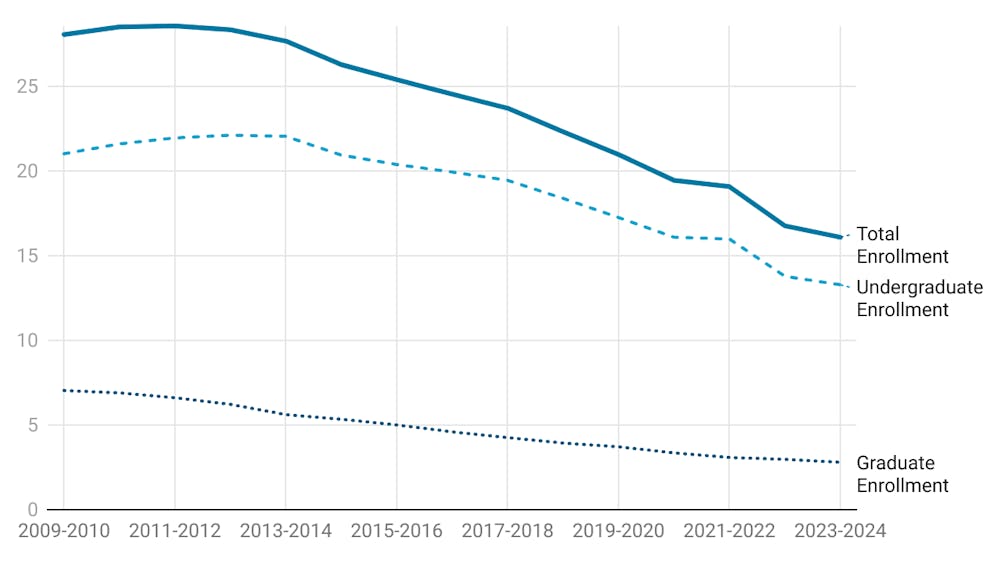On July 18, 2013, Detroit filed for Chapter 9 bankruptcy after decades of social and industrial decline. By this time, only General Motors Company’s headquarters remained in its borders, and only 713,862 remained of the 1.85 million citizens that lived in the city in the 1950s.
The Great Recession further impacted the city’s finances, which had already deteriorated. But as much as Detroit had been struck by bad luck, its citizens had the misfortune to be led by incompetent and corrupt political leaders. Former Mayor Kwame Kilpatrick served in office for six years, 2002 to 2008, before he served sporadic amounts of time in state and federal prisons for fraud, tax evasion, extortion, perjury, bribery and obstruction of justice.
He’s known as the mayor who billed the city $210,000 for personal expenses, but the actions Kilpatrick took in 2005 and 2006 will cost the city more, much more...$85 million at least. He made a bet and he lost; the city lost. What follows is an explanation of how that house of cards fell.
In 2005 and 2006, after the city had been successfully sued by city unions over their unfunded pensions, the city had to make a payment to its two municipal pension funds. Except, the city didn’t have the money, so it had to borrow. But the city had already exhausted its ability to borrow. To solve this problem, Kilpatrick entered the city into all manners of financial chicanery which Steven Rhodes, the federal judge overseeing Detroit’s bankruptcy case, called “complex and confusing.”
Ordinarily, when states and localities need to raise money for projects that they can’t pay for upfront, they borrow from the municipal bond market. They issue debt, in the form of bonds (I.O.U.s). And this isn’t always bad; it’s a completely normal convention of public finance, and it is the way most infrastructure projects are funded. Detroit deviated from this norm in two ways. First, it borrowed money in order to make a payment to its pension fund—an action that isn’t considered prudent by any measure. Second, it tried to hide the fact that it borrowed money, and issued a different kind of financial instrument for investors.
Here’s how it all started: The city couldn’t borrow money, so it created two entities that could borrow money. If that sounds like nonsense, that is because it is. The city created what are called service corporations—two municipal adjuncts that under the law are treated more or less separate from the city, but used for city purposes.
The service that these two service corporations would render to the city would be to fund its pensions.
Yes, I know that is absurd, but please, continue to follow along.
These two service corporations, created by the city, then issued financial instruments on behalf of the city known as certificates of participation. The activity that holders of certificates of participation would participate in was to fund the city’s pension with the promise that the city would pay them back. Promises, promises.
This activity should be understood in no uncertain terms as a sneaky way for the city, which was already in terrible fiscal health at this time, to avoid the debt limit set by the state. Kilpatrick made the city’s tenuous situation worse with this action, which ultimately raised $1.4 billion. The service corporations provided the money to the city, and then the city plopped it into the pension funds. The problems became worse, however.
The city purchased insurance on the financial instruments it issued in case it defaulted in order to make the certificates of participation more attractive to investors. Syncora Guarantee Inc. and Financial Guaranty Insurance Company insured the debt issued by the two service corporations. So, in the case where the city was unable to pay back investors, (a defaulting on the loan) the two insurers would help make those investors whole.
To recap, the city, in an effort to raise money for its two pension funds, created two shell entities to issue debt on its behalf. The city then purchased insurance on that debt in case it couldn’t pay up—which it couldn’t.
Moreover, a portion of the certificates of participation (the financial instruments issued by the two service corporations) were issued under terms with a variable interest rate. Anytime a loan is made, an interest rate is set. That interest rate can be certain; it can be 5 percent, 10 percent or more under onerous circumstances. In the city’s case, the interest rate set on the money it could borrow was allowed to fluctuate in accordance with market forces.
The city, or Kilpatrick rather, believed that this could be to the city’s benefit. There was the possibility that the city could have a lower, more favorable interest rate, which would reduce how much it had to pay back cumulatively. There was also the possibility that the city could have a higher, less favorable interest rate, and thus would have to pay more than expected.
To protect itself from this eventuality, it essentially purchased a different, more exotic form of insurance that was more common on Wall Street than Main Street. The city entered into an interest rate swaps contract with two banks, UBS and Bank of America. A lot of jargon from the financial services industry could illustrate these contracts in unclear and uncertain terms, but to save time I’ll say as Judge Rhodes did in his opinion on the city’s ability to enter bankruptcy: the city made a bet. Essentially, Kilpatrick bet that interest rates would rise. UBS and Bank of America took Kilpatrick up on that bet and bet that interest rates would fall. If interest rates rose, the two banks would pay the city the difference between the expected and actual rate. If interest rates fell, the two service corporations—the city, really—would pay the two banks.
More or less, Kilpatrick entered into Greektown Casino with taxpayer dollars and lost. Worse, the city, under Kilpatrick’s directive, purchased more insurance. It purchased insurance on insurance. It purchased insurance for the possibilty that interest rates would fall and the city would be unable to pay the two banks for the interest rate swaps contract it entered into. The insurance on the interest rate contracts came from Syncora and Financial Guaranty—an entirely separate insurance policy. Go take an Advil, then come back, because this is important.
The financial crisis happened, and to ease the pain the Federal Reserve System lowered interest rates. Remember, the city bet that interest rates would rise. And the city owed a lot of money, a lot of money. Before a settlement was reached in federal bankruptcy court, the city was set to payout $288 million to the two banks, UBS and Bank of America. It was eventually lowered to $85 million. The city ended up in federal bankruptcy court under Chapter 9 of the U.S. Bankruptcy Code. In order to exit bankruptcy, the city has to have approved its plan of adjustment, a plan which details it return to solvency and treatment of creditors. The city’s creditors number over 100,000, but two in particular are characters mentioned earlier in this story: Syncora and Financial Guaranty. The two companies insured a portion of the certificates of participation. Those certificates of participation are set to be impaired in federal bankruptcy court, which means the city intends to pay the purchasers of the certificates less than they were promised. How will those investors make back that money? Well, they’ll turn to Syncora and Financial Guaranty who insured those financial instruments.
Syncora and Financial Guaranty have objected to the city’s plan of adjustment, and made it harder to exit bankruptcy. In fact, they’ve demanded that the city relinquish and sell the works within the Detroit Institute of Arts in order to pay them back.
Recently, however, the city reached an accord with Syncora. The deal will provide that the insurer will receive $23 million, or 26 cents on the dollar, more than the 10 cents on the dollar it was set to receive. Another part of the deal, which further complicates matters, is that Syncora must be released from its duty to pay the two banks for the interest rate swaps contracts which were defaulted on. Remember when I said the city purchased insurance on those contracts. Part of the reason the city was able to settle with the two banks, and reduce its $288 million liability to $85 million was that the two banks expected to recoup their cost from Syncora and Financial Guaranty. If Syncora is released from its contract between the city and the counterparties to the interest rate swap then the two banks’ losses will rise—perhaps to levels they’ll deem unacceptable—which will ruin the earlier deal that was reached.
“They’re hurting,” said Kilpatrick in federal court in reference to Detroit. “A great deal of that hurt I accept full responsibility for.”
The former mayor has left Detroit with a quandary it will extract itself from, but only painfully so. On Oct. 10, 2013, Kwame Kilpatrick was sentenced to 28 years in prison.
As salacious as the details are about the former mayor’s possible involvement with a murder and his extramarital affair with Christine Beatty, the details of his financial deals while in office are far more important and consequential. These stories are difficult to relay, and warrant an understandable level of bewilderment, but as complicated as they are, the more unlawful they are likely to be. Citizens must be aware of what their elected officials do with their money.










